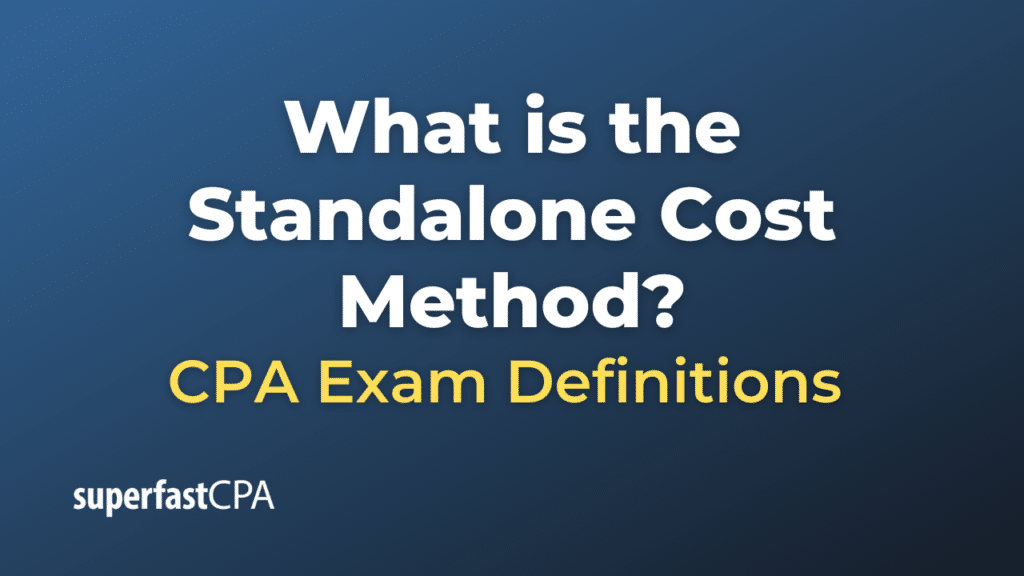Standalone Cost Method
The Standalone Cost Method (SACM) is a cost allocation approach often used in regulatory economics, especially in industries such as utilities. It’s particularly relevant in scenarios where multiple services or products share a common infrastructure or cost base. The main idea behind SACM is to determine the cost of providing each service or product independently, as if no other services or products were being offered.
The Standalone cost Method works by asking the question: “What would be the total cost of providing this service or product if it were the only service or product being offered?
Here’s a simple breakdown of the process:
- Identify Shared Costs: Determine which costs are shared across multiple services or products.
- Determine Standalone Costs: For each service or product, calculate the total cost of providing that service or product on its own, without the existence or influence of any other services or products. This might include not only direct costs but also the necessary portion of shared costs if the service or product were offered in isolation.
- Allocate Costs: Once you have determined the standalone costs for each service or product, you can then allocate the shared costs in a way that ensures that no service is charged more than its standalone cost.
Example of the Standalone Cost Method
Let’s delve deeper into a more detailed hypothetical example using the telecommunications industry:
Scenario: “NetFusion Telecommunications”
NetFusion Telecommunications offers two primary services to its customer base:
- High-speed internet.
- Cable television.
Both services use a shared network infrastructure, which includes cables, towers, servers, and maintenance crews.
Step 1: Identify Shared Costs
After an audit, NetFusion determines that the annual shared costs of maintaining this network infrastructure amount to $10 million.
Step 2: Determine Standalone Costs
Now, NetFusion calculates the standalone cost for each service:
- High-speed internet: If NetFusion provided only this service, they would need fewer servers but more bandwidth. The estimated cost to provide only the internet, including a proportionate share of the infrastructure (like towers and cables), is $7 million annually.
- Cable television: If only the cable TV service was offered, fewer bandwidth requirements would exist, but there would be costs related to content acquisition and more server space for broadcasting. The estimated standalone cost for this service is $6 million annually.
Step 3: Allocate Costs
Based on the standalone cost principle:
- The internet service should not bear costs more than $7 million.
- The cable television service should not bear costs more than $6 million.
However, the total standalone costs when summed up ($7 million + $6 million) equals $13 million, which is $3 million more than the actual shared cost of $10 million. This indicates that there are efficiencies and cost savings from offering both services over the shared infrastructure.
To allocate the $10 million shared costs fairly, NetFusion might decide to distribute the costs based on the proportion of standalone costs.
- Internet: ($7 million / $13 million) x $10 million = $5.38 million
- Cable TV: ($6 million / $13 million) x $10 million = $4.62 million
Thus, of the $10 million shared costs:
- $5.38 million is allocated to the internet service.
- $4.62 million is allocated to the cable TV service.
This ensures that neither service is being overburdened with costs beyond what it would take to provide that service independently.
Outcome:
By using the Standalone Cost Method, NetFusion Telecommunications ensures that costs are allocated fairly and transparently. This helps in regulatory compliance, setting service prices that reflect actual costs, and avoiding potential disputes or issues related to cross-subsidization.













